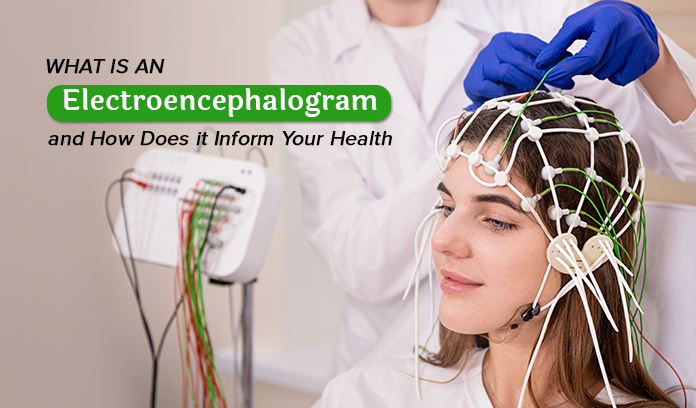An Electroencephalogram (EEG) is a non-invasive medical test that measures and records the electrical activity of the brain over a period of time.
It’s a valuable tool in the field of neurology and clinical medicine, providing essential information about brain function and health.
Here’s an overview of what an EEG is and how it informs your health:
1. EEG Procedure:
- Electrodes: During an EEG, small, flat metal discs called electrodes are attached to specific locations on the scalp. These electrodes are connected to an EEG machine.
- Recording: The EEG machine records the electrical activity generated by the brain’s neurons as they communicate with each other. This activity is recorded as waveforms.
- Duration: EEGs can be brief, such as a 20-30 minute routine EEG, or extended for longer periods (ambulatory EEG) to capture brain activity during various activities and sleep.
- Variants: There are specialized EEGs, including video EEGs, where the EEG is recorded simultaneously with video footage, which is often used to monitor and diagnose epilepsy.
2. Brainwave Patterns:
EEG records brainwave patterns, which are categorized into different frequency bands:
- Delta (0.5-4 Hz): Typically seen during deep sleep and in some abnormal brain conditions.
- Theta (4-8 Hz): Associated with drowsiness or the early stages of sleep.
- Alpha (8-12 Hz): Present when a person is awake but relaxed, often seen with closed eyes.
- Beta (12-30 Hz): Dominant during normal wakefulness, including activities like problem-solving and critical thinking.
- Gamma (30-100 Hz): Involved in higher cognitive functions like memory and perception.
3. Clinical Uses and Health Information:
- Diagnosis of Epilepsy: EEG is crucial in diagnosing epilepsy and determining the type of seizures a person may have. Specific EEG patterns are associated with different types of seizures.
- Monitoring Brain Function: It helps assess brain function in cases of head injuries, brain tumors, or after brain surgery.
- Sleep Disorders: EEG can diagnose and monitor sleep disorders like sleep apnea and parasomnias.
- Altered States of Consciousness: EEG is used to detect changes in consciousness, such as those induced by anesthesia or in coma patients.
- Research: EEG is a valuable tool in neuroscience research to understand brain function in various cognitive and emotional processes.
- Neurofeedback: In some cases, EEG is used in biofeedback therapy, where individuals learn to control their brainwave patterns for therapeutic purposes.
4. Limitations:
EEG records electrical activity on the surface of the brain, so it may not provide detailed information about deeper brain structures.
It offers a snapshot of brain activity at a given moment, so it might not capture intermittent abnormalities.
Interpretation can be complex, requiring skilled neurologists or clinical neurophysiologists.
In summary, an Electroencephalogram is a valuable diagnostic tool that records the electrical activity of the brain. It provides essential information for diagnosing and monitoring various neurological conditions, especially epilepsy and sleep disorders.
EEG results, when interpreted by medical professionals, inform treatment decisions and guide the management of neurological and cognitive health.

